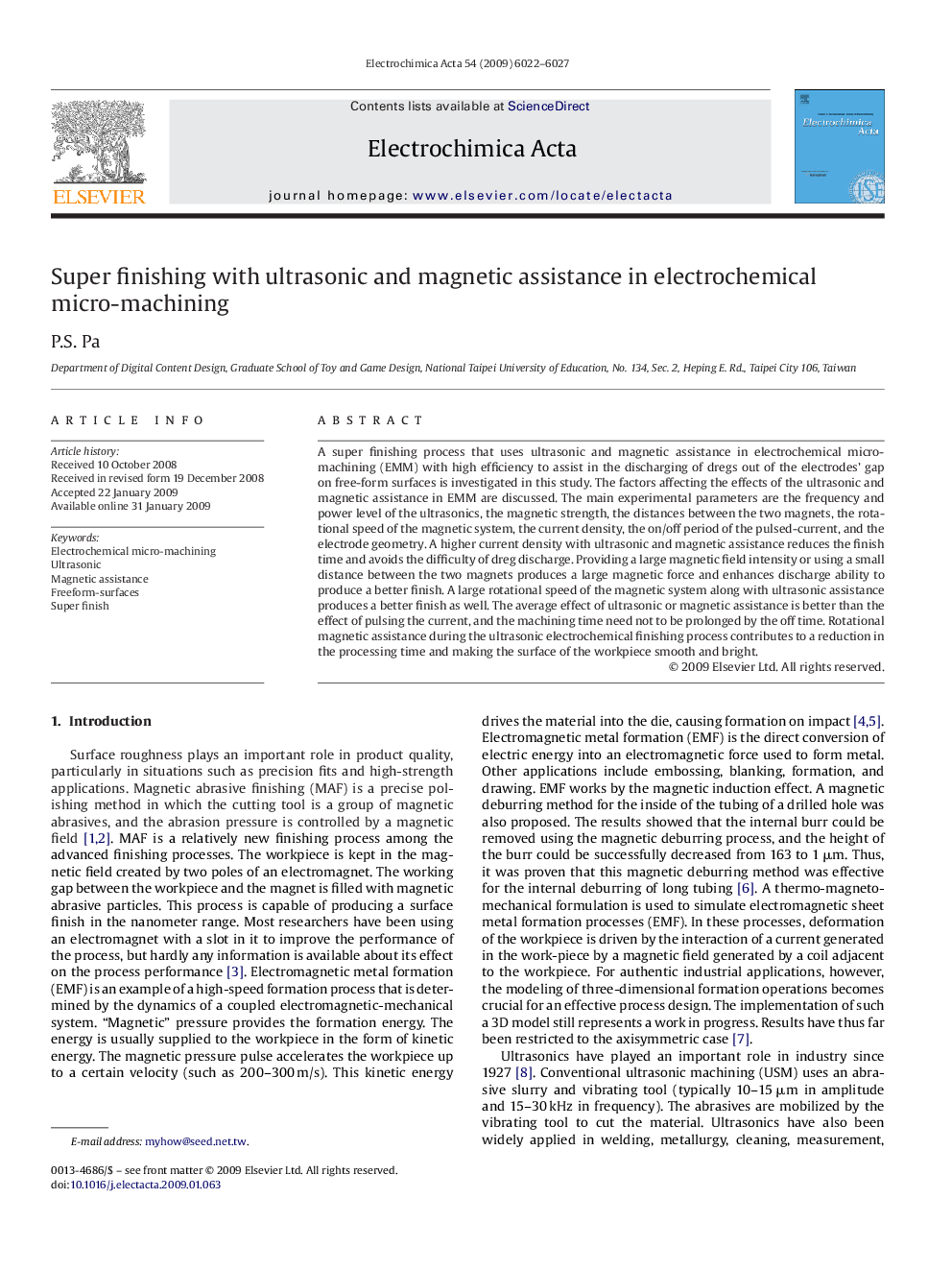| Article ID | Journal | Published Year | Pages | File Type |
|---|---|---|---|---|
| 192557 | Electrochimica Acta | 2009 | 6 Pages |
A super finishing process that uses ultrasonic and magnetic assistance in electrochemical micro-machining (EMM) with high efficiency to assist in the discharging of dregs out of the electrodes’ gap on free-form surfaces is investigated in this study. The factors affecting the effects of the ultrasonic and magnetic assistance in EMM are discussed. The main experimental parameters are the frequency and power level of the ultrasonics, the magnetic strength, the distances between the two magnets, the rotational speed of the magnetic system, the current density, the on/off period of the pulsed-current, and the electrode geometry. A higher current density with ultrasonic and magnetic assistance reduces the finish time and avoids the difficulty of dreg discharge. Providing a large magnetic field intensity or using a small distance between the two magnets produces a large magnetic force and enhances discharge ability to produce a better finish. A large rotational speed of the magnetic system along with ultrasonic assistance produces a better finish as well. The average effect of ultrasonic or magnetic assistance is better than the effect of pulsing the current, and the machining time need not to be prolonged by the off time. Rotational magnetic assistance during the ultrasonic electrochemical finishing process contributes to a reduction in the processing time and making the surface of the workpiece smooth and bright.
